2023 MG Hector vs Mahindra XUV700: Which is the Best SUV for a Modern Family?
They’re both big, butch, feature-packed, and spacious SUVs for the modern family. But which one is the better all-rounder? All that glitters is not gold. Every sparkling white surface – like the place you see in pictures here – is not snow.

All that glitters is not gold. Every sparkling white surface – like the place you see in pictures here – is not snow. And, similarly, not every butch SUV – like the MG Hector or the Mahindra XUV700 – is an SUV. And, if you think about it long and hard, you’ll realise that the world around us doesn’t require them to be the real deal.
You see, in ancient times, SUVs were meant to tread on rough turfs, ranging from battlefields to inhospitable corners of the earth, with their rugged 4x4 drivetrains. Today, though, the definition of the term SUV has changed dramatically. In the current era, the daily job of an SUV is to drop the kids to school in comfort, while making you look cool and alpha as you bully your way around hatchbacks and sedans. And since we are no longer in the stone age, crude or bland interiors won’t cut it anymore. So, we want our SUVs to be equipped with big screens and internet connectivity, which can give the latest smartphones a run for their money.
Now, if you’ve got such requirements and have a budget of about ₹25 lakh, the Hector and XUV700 fit the bill to a tee. They’ve both big, bold, and stylish exteriors and feature-laden, spacious, and comfortable interiors. But, of course, they are not equal. So, to find out which of the two offers more value to a family man, considering the aforementioned needs and wants, we bring you this detailed comparison test.
Bling vs Bold
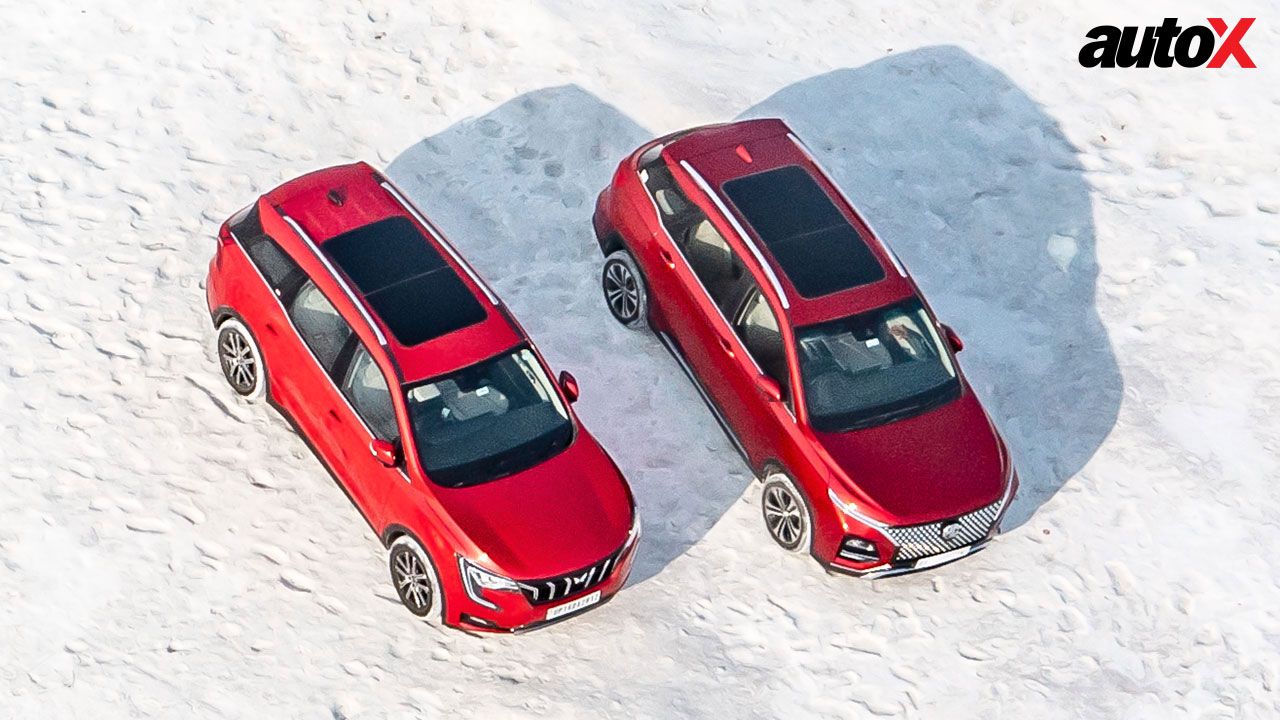
The concept of subtlety is alien to both the Hector and XUV700 – they’re both equally loud and blingy, albeit in different ways. In its latest avatar, the Hector comes with a mahoosive chrome grille, which grabs attention everywhere you go, for it’s an all-consuming design element. Now, some may call the Hector a bit too chintzy for their taste, but the fact is that most buyers in this segment want that extra bling.
Between the two though, the XUV700 is more SUV-like as it’s more butch and in-your-face. Plus, with styling elements like double-C-shaped LED DRLs, flush door handles, an aggressive bumper design, and prominent haunches, the XUV700 has a slightly more premium appeal.
Although both vehicles have identical wheelbases (2,750mm) and are similar in length and height, the XUV is substantially wider, and conspicuously so. While the MG has a tall-boy appearance, the XUV700 is more proportionate from all angles. The top-spec versions of both vehicles come with 18-inch alloy wheels, but the Hector looks under-tyred because of its large wheel wells.
Tech Talk
In terms of creature comforts and in-car tech, the Hector and Mahindra trade blows like a pair of equally skilled boxers – it’s hard to place your bets on one or the other. They’re both loaded to the gills – big screens, panoramic sunroofs, ADAS, 360-degree cameras, wireless smartphone connectivity via Apple CarPlay / Android Auto, auto headlamps, rain-sensing wipers, and what have you. That said, the MG does have an edge over the XUV700 to an extent in this department. For instance, it gets auto-dimming ORVMs, ventilated front seats, an electrically-adjustable front passenger seat, a powered tailgate, 8-colour ambient lighting, and uncountable voice commands – all of which are missing in the XUV700. MG has also equipped the Hector with ‘Intelligent Turn Indicators’, which automatically turn the blinkers on as soon as you rotate the steering wheel. This may sound clever on the brochure, but it’s so not! It’s downright annoying, especially when you’re driving in the hills. What’s even more annoying is that we couldn’t figure out a way to turn it off.
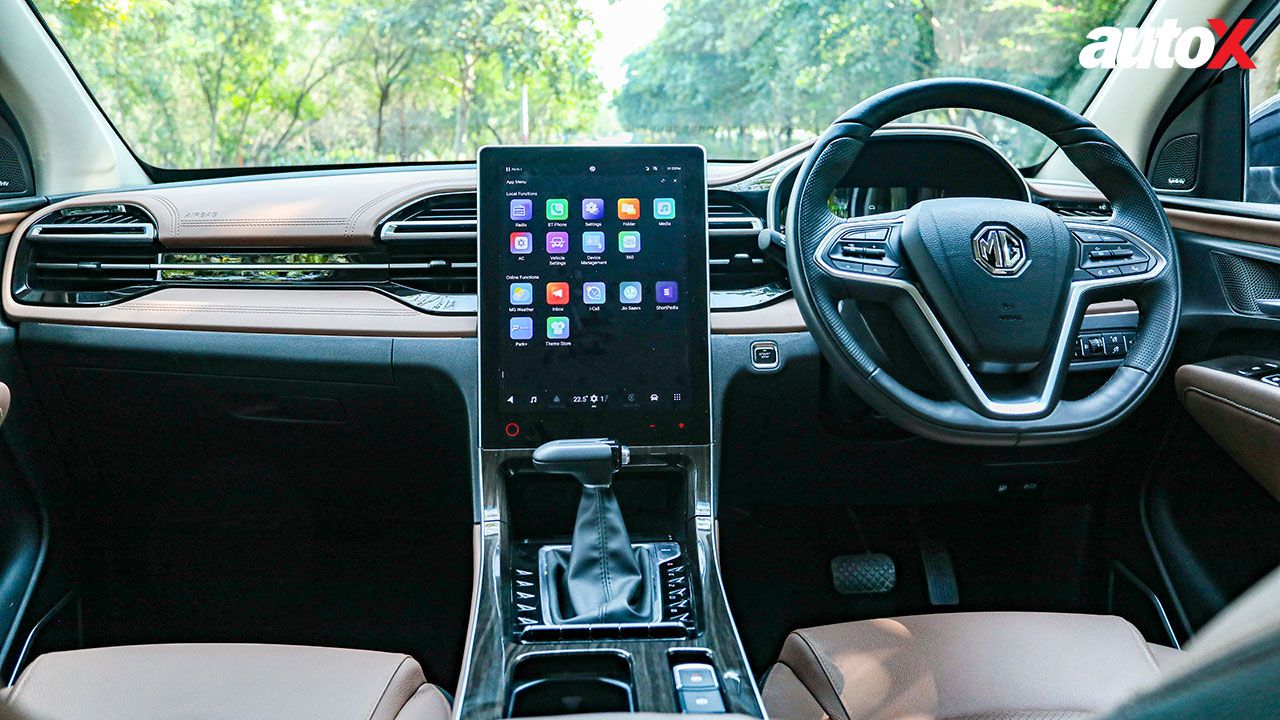
On the upside, the MG’s 14-inch portrait touchscreen looks and feels mega in comparison to the XUV700’s 10.25-inch touchscreen. The user interface is also better and more intuitive. However, it isn’t flawless – it takes aeons to boot, and the response time can be s-l-o-w at times. And since the screen is massive, it can be distracting on the move, especially when you’re fiddling with the digital aircon controls and can’t find the right settings.
The XUV’s display isn’t glitch-free either. At times, the screen freezes – during the test, it happened on a couple of occasions while using Google Maps via CarPlay. However, the good thing is that there are physical controls for the aircon and a chunky rotary dial to navigate through different menus/settings effortlessly. All this makes it more practical and simpler to use.
Both cars are equipped with Level-2 ADAS. We didn’t test them extensively, but during the highway run, we found the MG’s system to be better and more seamless than that of the XUV. For instance, in the XUV, the lane keep assist works only when you hit the lane markers, and then it aggressively corrects the steering, while in the MG, the system always keeps you in the lane instead of waiting for the vehicle to swerve left and right. The MG’s ADAS features are also easier to turn on or off, thanks to quick access buttons on the steering wheel. In the XUV, it’s a bit more complicated, as you’ve to scroll through different sub-menus.
Make Some Space
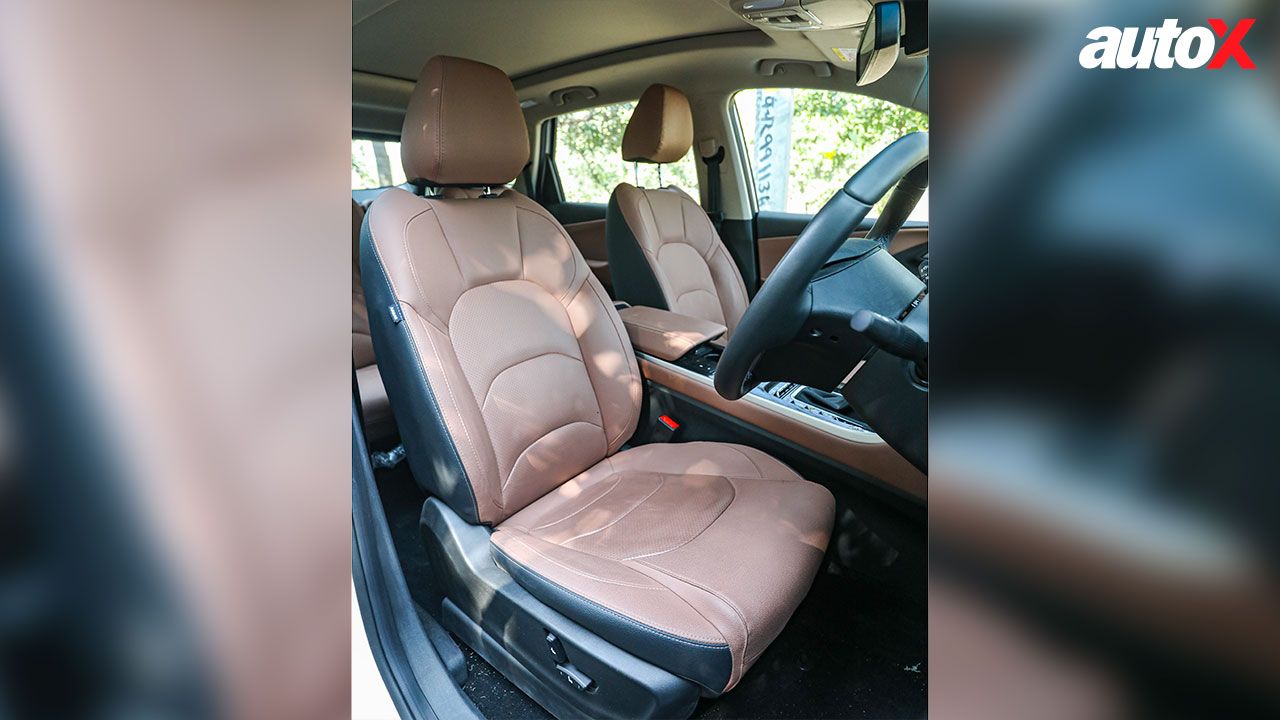
MG offers the Hector with a 5-, 6-, or 7-seat layout, whereas the XUV is available in either a 5- or 7-seat configuration. Which is more comfortable and spacious for a family? Let’s find out, row by row.
The XUV’s front seats are sofa-like big and accommodating – they’re supremely comfortable, and finding the right driving position takes no time. The MG’s front seats aren’t as plush or spacious, but that’s not to say they are uncomfortable. In fact, they offer better side support and hold you firmly in place. There’s no lumbar support though, which can be a problem during a long journey. Finding the right driving position can also take a while – the driver seat, even though electrically adjustable, doesn’t go all the way down, so you end up with a feeling that you are sitting on top of the vehicle all the time. On the upside, the visibility out is great.
The Hector Plus 6-Seater gets captain seats in the second row, which can both recline and slide. The XUV, on the other hand, has a fixed bench. Now, both are spacious, but it’s the MG that makes you feel more special and comfortable. The XUV’s rear bench offers better under-thigh support, but, overall, if you’re going to be chauffeured around, the Hector is the better bet.
The Hector’s third row is appalling – it’s only there for the sake of it. It’s constricted and downright unusable unless you’re a puppy. If you’re a fully grown adult, you better have the flexibility of a yoga trainer – there’s no other for you to stuff your body in there without straining a muscle or two! Even for kids, it’s going to be an unpleasant experience. There’s virtually no legroom, which means that if you’ve got legs, there is no room for them. As simple as that!
The XUV700’s third row isn’t palatial, but it’s relatively better. There’s decent legroom, and even adults can think of sitting there for short durations. The headroom is a bit tight in comparison to the Hector, though. Both vehicles’ third rows have fan speed controls, AC vents, and cup holders. Third-row occupants also get a USB port in the Hector. The boot space in both the SUVs is meagre, at best, with all the rows up, but both have flat-folding third rows, resulting in acres of space.
Lastly, the quality and overall fit-and-finish of materials are evenly matched in both cars, although you’ll easily notice some hard plastic bits in the XUV’s cabin. The Hector Plus’ walnut brown and black upholstery/trim also feels more premium than the ivory white and grey theme of the XUV. Not to mention, maintaining the lighter shades of the latter will be a challenging task in the long run.
Horses for Courses
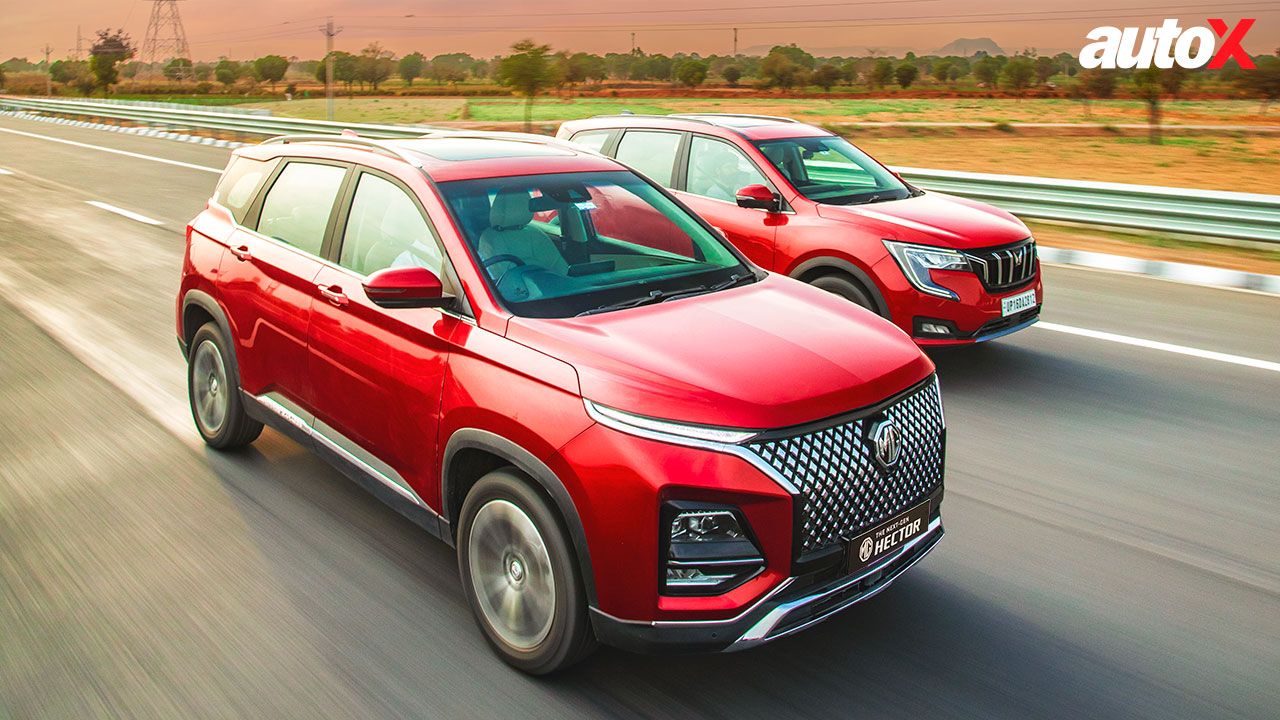
Both the Hector and XUV700 are available in petrol and diesel versions. For this test, we picked the petrol-powered versions. Now, when it comes to the game of top trumps, the Mahindra blows the MG out of the water, thanks to its bigger capacity and more powerful powertrain. With 197bhp and 380Nm on tap, the XUV’s 2.0-litre turbocharged powertrain is the clear winner if you’re looking for outright performance. Barring a bit of a turbo lag below 2,000rpm, this petrol motor behaves more like a diesel unit – the mid-range is flattering, and torque pours thick between 2,000 and 5,000rpm, making it an extremely versatile performer in all driving conditions. The six-speed torque converter complements the engine’s character with its well-judged and seamless shifts. It’s also quite snappy during kick-down.
The Hector’s 1.5-litre turbo petrol delivers 141bhp and 250Nm, and it simply pales in comparison if you want a thrilling driving experience. That said, it’s not a complete dud. The performance is brisk, if not explosive, and surprisingly, it performs better in the city/stop-go traffic than the XUV. Part-throttle inputs are more responsive, and with a CVT transmission, it masks the lag at low engine speeds rather well. This powertrain is also quieter than the XUV’s, which is a little gruff, especially during cold starts.
However, things start to go downhill for the Hector when you start demanding rapid progression. The typical CVT rubber-band effect rears its ugly head as soon as you push the a-pedal to the metal, and the engine, too, feels strained at high rpm. Sure, you’ll hit triple-digit speeds easily, but the Hector doesn’t seem to enjoy it. And it’s a similar case when it comes to its handling.
The Hector isn’t designed to have fun. It’s uninspiring to drive – plain and simple! It’s soft and ungainly and doesn’t like to be thrown into corners enthusiastically. The steering isn’t entirely numb, but it feels disconnected almost every time. However, the Hector turns when you want it to, and it holds the road as it’s supposed to. Long story short, the Hector is not a driver’s delight, but it goes about doing its business without any drama. And honestly, for an average Joe, that’s what matters.
On the flip side, it does rather well in terms of comfort. The ride quality is plush, as it flattens virtually every bad surface. Although an overly soft setup does mean sharp bumps can result in a loud clunk at times. The high-speed stability is good, and it can maintain a cruise speed of 120km/h without feeling floaty. At high speeds, it takes road undulations and imperfections in its stride confidently.
The XUV700 feels equally heavy from behind the wheel. Try to do silly stuff with it, and you can immediately tell it’s a hefty and roly-poly teddy. The body roll isn’t as pronounced here as it’s in the MG, but it can still make a child sick if you hustle it around curves enthusiastically. However, even while doing this, the XUV has a connected feel – you can at least predict the way it will behave to your inputs. The steering also offers decent feedback in comparison to that of the MG. You definitely feel in more control in the XUV.
The XUV’s suspension incorporates FSDs or Frequency Selective Dampers, which use a mechanical valve to alter the damping/frequency, depending on the road surface. Think of it as a low-cost alternative to more sophisticated electronic damper control found in more expensive cars. Put simply, it’s quite effective in the XUV700. There’s an underlying firmness and composure in the way the Mahindra rides over broken surfaces. The suspension feels taut without being objectionable. The ride comfort is as good as that of the MG, if not better. The low-speed ride over bad roads is a bit busy and comparatively noisy in comparison to that of the Hector, but if you talk about its performance overall, I’d say the XUV’s ride and handling balance is more mature.
Verdict
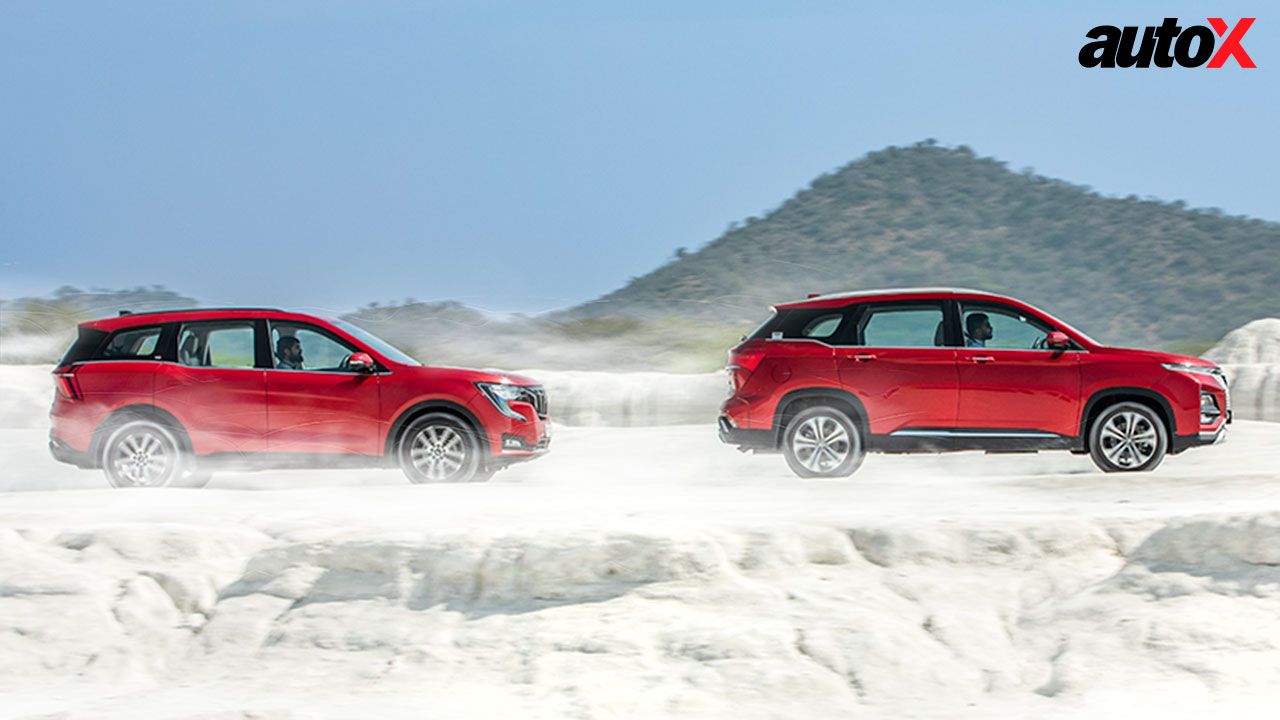
Choosing a winner between these two is difficult, albeit not impossible. It all depends on what you prioritise. The Hector has a clear advantage in terms of comfort, features, and tech. Plus, it also has a higher bling factor and offers a more effortless driving experience. So, if you don’t much care about driving pleasure and are going to be chauffeured around, the Hector makes more sense.
The XUV, on the other hand, is spacious, butch, and more engaging to drive. But, more importantly, it isn’t that far behind the Hector in areas where the latter excels. Plus, it offers a better third-row experience, meaning for large families there’s no contest between the two. Sure, it’s a little more expensive than the MG, but, then, you do get your money’s worth, given that it offers more firepower, better dynamics, and an overall well-rounded new-age SUV package.
Also read
2023 MG Hector Plus Review: The King of Bling is back!
Kia Carens vs Hyundai Alcazar vs Tata Safari vs Mahindra XUV700: Comparison
Fuel: Petrol
Engine: 1,451cc / 4-Cylinder / Turbocharged
Transmission: CVT / Front-Wheel Drive
Power: 141bhp @ 5,000rpm
Torque: 250Nm @ 1,600 – 3,600rpm
Price: ₹22.47 Lakh (Ex-Showroom)
X-Factor: An unbeatable proposition if you want a big, blingy, tech-laden, and effortless family SUV.
|
Pros • Tech • Comfort |
Cons • Cramped third-row |



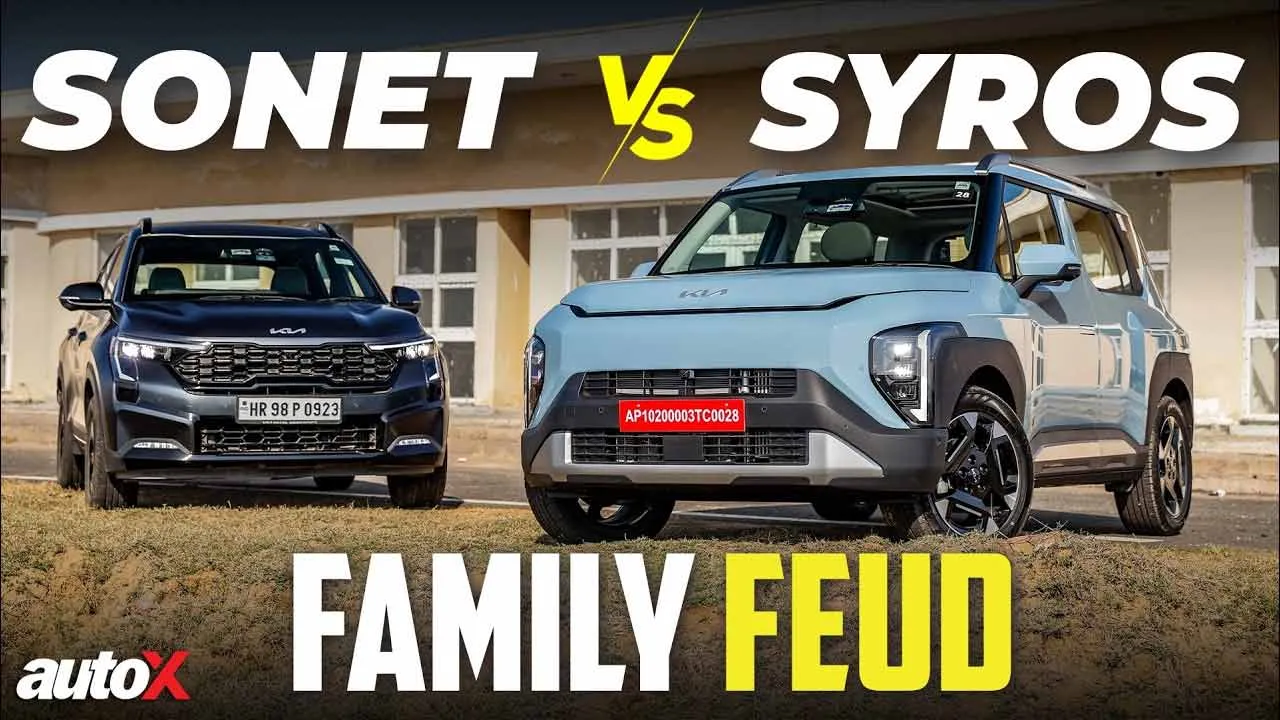



Write your Comment on